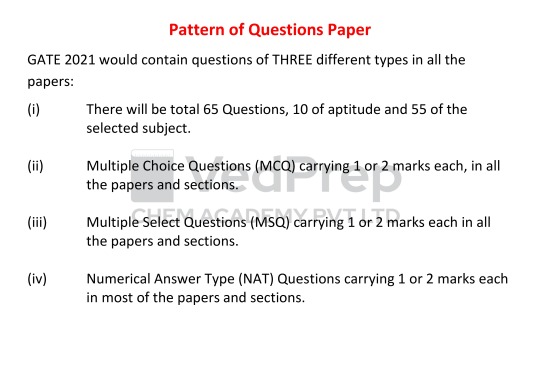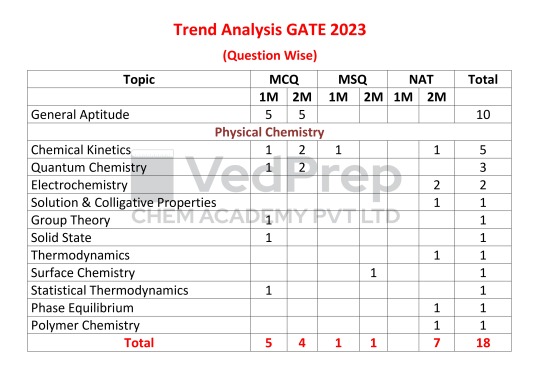#gate 2024
Text

Top 5 Saving Secrets Revealed with Mutual Fund Insights
In the realm of financial growth, unlocking the secrets to effective saving is paramount. Here, we unveil the top 5 saving secrets, leveraging the power of mutual fund insights and embracing the convenience of online SIPs.
1.Strategic Diversification:
Employing mutual funds allows for strategic diversification, a key secret to mitigating risks. Invest in a variety of assets, from equities to bonds, carefully tailored to your financial goals. Online SIP platforms facilitate seamless diversification, ensuring a good mix for optimal returns.
2.Systematic Investment Planning (SIP):
The magic of compounding lies in disciplined, regular investments. Embrace the power of SIP online, enabling automatic contributions at regular intervals. This not only promotes financial discipline but also harnesses the potential for good, long-term returns.
3.Professional Fund Management:
Mutual funds are guided by seasoned fund managers. Their expertise ensures that your investments align with market trends. This hands-on management is a secret weapon for those seeking a good balance between risk and return.
4.Leveraging Market Trends:
Mutual fund insights empower investors to ride the waves of market trends. Whether it's identifying emerging sectors or navigating market downturns, mutual funds, especially through online SIPs, keep you well-informed and positioned for financial success.
5.Flexibility and Liquidity:
Optimal saving requires flexibility. Mutual funds, especially those accessible through online SIP platforms, offer liquidity and flexibility to adjust your investment strategy according to changing life circumstances. This adaptability is a key secret to sustaining a good financial portfolio.
In conclusion, unlocking the secrets to effective saving involves harnessing the insights provided by mutual funds, amplified by the convenience of online SIPs. Embrace these strategies for a path to financial prosperity.
Visit Us At :- https://in.pinterest.com/pin/952792864904106494/
5 notes
·
View notes
Text

based ofc on this
#baldur's gate 3#bg3#bg3 fanart#astarion ancunin#bg3 astarion#astarion#stuff and things#userpharawee#I'm back! hi :D#just a quick silly thing to try and get back into the groove after two weeks hhh#wHY do I always feel like I forgot how to draw after not drawing for a while uGH. anyway.#how have you guys been? I hope 2024 is treating you well so far ♥︎
24K notes
·
View notes
Text
GATE, JAM 2024: Apply for CCMT, CCMN by June 7
Applications are now open for centralised counselling for admissions to MTech, MArch, MPlan 2024 (CCMT 2024) and MSc, MSc Tech 2024 (CCMN 2024) for qualifying candidates of GATE 2024 and JAM 2024 respectively. Here’s what you need to know:

Centralised Counselling Details
.Conducted By: Sardar Vallabhbhai National Institute of Technology (SVNIT), Surat
.Programs Covered: PG programs in NITs, IIEST Shibpur, IITs, CFTIs, and other participating institutes
Important Dates
.Application Deadline: June 7, 5:30 pm
How to Apply
.For GATE 2024 Qualifiers (CCMT 2024): Register for admissions into 61 participating institutions including NITs, IIITs, and CFTIs for master of engineering or technology, architecture, and planning programs through CCMT 2024.
.For JAM 2024 Qualifiers (CCMN 2024): Register for admissions into 29 participating institutions including NITs, IIITs, and CFTIs for MSc, MSc (Tech) programs through CCMN 2024.
Eligibility Criteria
.GATE 2024: Valid score required for master of engineering or technology, architecture, and planning programs.
.JAM 2024: Valid score required for MSc and MSc (Tech) programs.
.Don’t miss out on this opportunity to secure admission to prestigious institutions. Apply now before the deadline!
0 notes
Text
IISc ने जारी की GATE 2024 की फाइनल आंसर-की, जानें कैसे कर सकते है डाउनलोड
IISc ने जारी की GATE 2024 की फाइनल आंसर-की, जानें कैसे कर सकते है डाउनलोड
GATE Exam Final Answer Key 2024: इंडियन इंस्ट्टीयूट ऑफ साइंसेज, बेंगलुरु (IISc) ने गेट परीक्षा (GATE 2024) की फाइनल आंसर-की रिलीज कर दी है। संस्थान ने नतीजों का एलान करने से पहले फिलहाल, आज 15 मार्च, 2024 को परीक्षा की अंतिम उत्तरकुंजी जारी की है।
अभ्यर्थी इसे पोर्टल पर जाकर डाउनलोड कर सकते हैं। इस संबंध में सोशल मीडिया पर भी जानकारी दी गई है।
GATE Exam Final Answer Key 2024: गेट एग्जाम फाइनल…

View On WordPress
0 notes
Text
GATE 2024 Response Sheet Out On gate2024.iisc.ac.in; Check Direct Link Here
The Indian Institute of Science (IISc), Bengaluru has released the response sheet for the Graduate Aptitude Test in Engineering (GATE) 2024 on the official website at gate2024.iisc.ac.in. To check and download the GATE 2024 Response Sheet, candidates need to utilise their login credentials, comprising their enrollment or email ID along with their password. These response sheets display…
View On WordPress
#GATE#GATE 2024#GATE 2024 Answer Key#GATE 2024 Exam#GATE 2024 Response Sheet#GATE 2024 Response Sheet released#GATE 2024 Result#gate2024.iisc.ac.in#IISc Gate#Indian Institute of Science (IISc) Bengaluru
0 notes
Text

GATE BT, CUET PG, GAT B, IISc Practice Test || Topic- ✍🏽👉🏻Recombinant DNA Technology 🥳https://online-test.classplusapp.com/?testId=65a95479d46455a27bf0fa86&defaultLanguage=en-IN
0 notes
Text
https://campusutra.com/gate-2024-admit-card-live/
0 notes
Text


#baldur's gate 3#bg3#bg3 fanart#astarion#bg3 astarion#this is not new art i am cleaning my art folders and apparently i forgot to post this????#anyways astarion brain rot train 2024 let's gooooooooo!!!
12K notes
·
View notes
Text
https://gofordigitalindia.in/web-stories/gate-2024-admit-card-updates/
0 notes
Text

Thaniel’s first night at camp 🏕️
4K notes
·
View notes
Text

He slays
Inspired by Neil’s outfit from BAFTA Games awards:
https://x.com/baftagames/status/1778474704086368723?s=46&t=EuBiJuFrpmM7JiLiuDbaCA
this art on twt:
https://x.com/skeptical_lynx/status/1778597831856562354?s=46&t=EuBiJuFrpmM7JiLiuDbaCA
#baldur’s gate 3#baldurs gate 3#bg3#astarion ancunin#baldurs gate astarion#bg3 astarion#astarion#neil newbon#bafta games awards#bafta games 2024
7K notes
·
View notes
Text

Mermaid!AU with merman Astarion and pirate Gale who was shipwrecked 🏴☠️🧜♂️
#mermay#bloodweave#gale x astarion#astarion#astarion ancunin#gale of waterdeep#gale dekarios#baldur's gate 3#bg3#fanart#baldur’s gate astarion#artists on tumblr#illustration#art#digital art#mermay 2024#mermaid art#merman
3K notes
·
View notes
Text
How to Prepare For GATE 2024 – A Guide by Vedprep

Gate 2024 is almost here and our young aspirants have never been so restless. Our students are ready and we can feel the excitement and anticipation for the exam building up. However, every passing day brings us closer to the BIG DAY, the day of examination. And for that, VedPrep Chem Academy has curated the perfect guide for all the GATE aspirants out there. Curated with Ved Sir, this guide will solve all your queries regarding “How to prepare for GATE 2024”.
So let’s dive right into this ultimate guide!
A Quick Summary
GATE or Graduate Aptitude Test in Engineering is an examination for aspirants who aspire to pursue Master of Engineering, M.Tech., and Ph.D. GATE lets aspirants get direct admissions into the most prestigious universities of our country such as IITs, IIITs, and IISERs.
Moreover, the top GATE Rankers can get direct or interviewed jobs in PSUs like Indian Oil, GAIL, and CIL.
If you want to learn more about GATE and it’s latest notifications, then you can click on the links below:
Everything about GATE: click here
GATE 2024 Pattern of Question Paper (Latest)
Since GATE is a highly competitive examination, your rank is what matters the most. No matter what your GATE scorecard says, it’s your rank that will decide your future. Therefore, preparation for a good rank starts with understanding the examination first. This is the first step of our guide “How to prepare for GATE 2024”. We’ll be analysing the GATE examination for Chemistry. However, the strategy for GATE 2024 will be applicable for all subjects. So, let’s go through the exam pattern!
The exam will have a total of 65 questions.
10 Aptitude based questions
55 subject based questions
There will be 3 types of questions in the GATE 2024 Question Paper
Multiple Choice Questions (MCQs) carrying 1-2 marks each in all papers and sections.
Multiple Select Questions (MSQs) carrying 1-2 marks each.
Numerical Answer Type Questions (NATs) carrying 1-2 marks each in most papers and sections.

Further Analysis of GATE 2024 Examination Pattern
The duration of GATE 2024 will be the same as every other year. That is, 3 hours of Computer Based Test (CBT). During that time duration, candidates will have to solve General aptitude and their chosen subject’s questions.
The General Aptitude section will consist of:
Recall
Comprehension
Application
Analysis and Synthesis
After analysing the examination pattern, there are some important takeaways that you should bear in mind.
The Aptitude section is very important. Never ignore it!
Prepare as per the latest syllabus.
Bring some diversification in the types of questions you practise.
Prepare for all sections (MCQs/MSQs/NAT)

GATE 2024 Syllabus
The syllabus of GATE (Graduate Aptitude Test in Engineering) has always been vast for all subjects. There’s a lot to cover, and a lot to summarise to keep your preparation up to the mark. You will be competing with prodigies who have maintained a streak of scores. In that case it’s essential that your preparation strategy for GATE s2024 is full proof. And to make that happen, the first step is to know your syllabus.
1. Physical Chemistry
Structure
Postulates of quantum mechanics. Operators. Time dependent and time independent Schrödinger equations. Born interpretation. Dirac bra-ket notation. Particle in a box: infinite and finite square wells; concept of tunnelling; particles in 1D, 2D and 3D-box; applications. Harmonic oscillator: harmonic and anharmonic potentials; hermite polynomials. Rotational motion: Angular momentum operators, Rigid rotor. Hydrogen and hydrogen-like atoms : atomic orbitals; radial distribution function. Multi-electron atoms: orbital approximation; electron spin; Pauli exclusion principle; Slater determinants. Approximation Methods: Variation method and secular determinants; first order perturbation techniques. Atomic units. Molecular structure and Chemical bonding: Born-Oppenheimer approximation; Valence bond theory and linear combination of atomic orbitals -molecular orbital (LCAO-MO) theory. Hybrid orbitals. Applications of LCAO-MO theory to H2+, H2; orbital theory (MOT) of homo- and heteronuclear diatomic molecules. Hückel approximation and its application to annular π electron systems.
Group theory
Symmetry elements and operations; Point groups and character tables; Internal coordinates and vibrational modes; symmetry adapted linear combination of atomic orbitals (LCAOMO); construction of hybrid orbitals using symmetry aspects.
Spectroscopy
Atomic spectroscopy; Russell-Saunders coupling; Term symbols and spectral details; origin of selection rules. Rotational, vibrational, electronic and Raman spectroscopy of diatomic and polyatomic molecules. Line broadening. Einstein’s coefficients. Relationship of transition moment integral with molar extinction coefficient and oscillator strength. Basic principles of nuclear magnetic resonance: gyromagnetic ratio; chemical shift, nuclear Coupling.
Equilibrium
Laws of thermodynamics. Standard states. Thermochemistry. Thermodynamic functions and their relationships: Gibbs-Helmholtz and Maxwell relations, Gibbs-Duhem equation, van’t Hoff equation. Criteria of spontaneity and equilibrium. Absolute entropy. Partial molar quantities. Thermodynamics of mixing. Chemical potential. Fugacity, activity and activity coefficients. Ideal and Non-ideal solutions, Raoult’s Law and Henry’s Law, Chemical equilibria. Dependence of equilibrium constant on temperature and pressure. Ionic mobility and conductivity. Debye-Hückel limiting law. Debye-Hückel-Onsager equation. Standard electrode potentials and electrochemical cells. Nernst Equation and its application, relationship between Electrode potential and thermodynamic quantities, Potentiometric and conductometric titrations. Phase rule. Clausius-Clapeyron equation. Phase diagram of one component systems: CO2, H2O, S; two component systems: liquid- vapour, liquid-liquid and solid-liquid systems. Fractional distillation. Azeotropes and eutectics. Statistical thermodynamics: microcanonical, canonical and grand canonical ensembles, Boltzmann distribution, partition functions and thermodynamic properties.
Kinetics (Topic have been rearranged)
Elementary, parallel, opposing and consecutive reactions. Steady state approximation. Mechanisms of complex reactions. Unimolecular reactions. Potential energy surfaces and classical trajectories, Concept of Saddle points, Transition state theory: Eyring equation, thermodynamic aspects. Kinetics of polymerization. Catalysis concepts and enzyme catalysis. Kinetic isotope effects. Fast reaction kinetics: relaxation and flow methods. Diffusion controlled reactions. Kinetics of photochemical and photophysical processes.
Surfaces and Interfaces
Physisorption and chemisorption. Langmuir, Freundlich and Brunauer-Emmett-Teller (BET) isotherms. Surface catalysis: Langmuir-Hinshelwood mechanism. Surface tension, viscosity. Self-assembly. Physical chemistry of colloids, micelles and macromolecules.
2. Organic Chemistry
Stereochemistry
Chirality and symmetry of organic molecules with or without chiral centres and determination of their absolute configurations. Relative stereochemistry in compounds. having more than one stereogenic centre. Homotopic, enantiotopic and diastereotopic atoms, groups and faces. Stereoselective and stereospecific synthesis. Conformational analysis of acyclic and cyclic compounds. Geometrical isomerism and optical isomerism. Configurational and conformational effects, atropisomerism, and neighbouring group participation on reactivity and selectivity/specificity.
Reaction Mechanisms
Basic mechanistic concepts – kinetic versus thermodynamic control, Hammond’s postulate and Curtin-Hammett principle. Methods of determining reaction mechanisms through kinetics, identification of products, intermediates and isotopic labelling. Linear free-energy relationship – Hammett and Taft equations. Nucleophilic and electrophilic substitution reactions (both aromatic and aliphatic). Addition reactions to carbon-carbon and carbon-heteroatom (N and O) multiple bonds. Elimination reactions. Reactive intermediates – carbocations, carbanions, carbenes, nitrenes, arynes and free radicals. Molecular rearrangements.
Organic Synthesis
Synthesis, reactions, mechanisms and selectivity involving the following classes of compounds – alkenes, alkynes, arenes, alcohols, phenols, aldehydes, ketones, carboxylic acids, esters, nitriles, halides, nitro compounds, amines and amides. Uses of Mg, Li, Cu, B, Zn, P, S, Sn and Si based reagents in organic synthesis. Carbon-carbon bond formation through coupling reactions – Heck, Suzuki, Stille, Sonogoshira, Negishi, Kumada, Hiyama, Tsuji-Trost, olefin metathesis and McMurry. Concepts of multistep synthesis – retrosynthetic analysis, strategic disconnections, synthons and synthetic equivalents. Atom economy and Green Chemistry, Umpolung reactivity – formyl and acyl anion equivalents. Selectivity in organic synthesis – chemo-, regio- and stereoselectivity. Protection and deprotection of functional groups. Concepts of asymmetric synthesis – resolution (including enzymatic), desymmetrization and use of chiral auxiliaries, organocatalysis. Carbon-carbon Sergeant to set it as and carbon-heteroatom bond forming reactions through enolates (including boron enolates), enamines and silyl enol ethers. Stereoselective addition to C=O groups (Cram, Prelog and Felkin-Anh models).
Pericyclic Reactions and Photochemistry
Electrocyclic, cycloaddition and sigmatropic reactions. Orbital correlations – FMO and PMO treatments, Woodward-Hoffmann rule. Photochemistry of alkenes, arenes and carbonyl compounds. Photooxidation and photoreduction. Di- + -methane rearrangement, Barton-McCombie reaction, Norrish type-I and II cleavage reaction.
Heterocyclic Compounds
Structure, preparation, properties and reactions of furan, pyrrole, thiophene, pyridine, indole, quinoline and isoquinoline.
Biomolecules
Structure, properties and reactions of mono- and di-saccharides, physicochemical properties of amino acids, chemical synthesis of peptides, chemical structure determination of peptides and proteins, structural features of proteins, nucleic acids, lipids, steroids, terpenoids, carotenoids, and alkaloids.
Experimental techniques in organic chemistry
Optical rotation (polarimetry). Applications of various chromatographic techniques such as thin-layer, column, HPLC and GC. Applications of UV-visible, IR, NMR and Mass spectrometry in the structural determination of organic molecules.
3. Inorganic Chemistry
Main Group Elements
Hydrides, halides, oxides, oxoacids, nitrides, sulfides – shapes and
reactivity. Structure and bonding of boranes, carboranes, silicones, silicates, boron nitride,
borazines and phosphazenes. Allotropes of carbon, phosphorous and sulphur. Industrial
synthesis of compounds of main group elements. Chemistry of noble gases, pseudohalogens,
and interhalogen compounds. Acid-base concepts and principles (Lewis, Brønsted, HSAB and
acid-base catalysis).
Transition Elements
Coordination chemistry – structure and isomerism, theories of bonding
(VBT, CFT, and MOT). Energy level diagrams in various crystal fields, CFSE, applications of
CFT, Jahn-Teller distortion. Electronic spectra of transition metal complexes: spectroscopic
term symbols, selection rules, Orgel and Tanabe-Sugano diagrams, nephelauxetic effect and
Racah parameter, charge-transfer spectra. Magnetic properties of transition metal complexes.
Ray-Dutt and Bailar twists, Reaction mechanisms: kinetic and thermodynamic stability,
substitution and redox reactions. Metal-metal multiple bond.
Lanthanides and Actinides
Recovery. Periodic properties, spectra and magnetic properties.
Organometallics: 18-Electron rule; metal-alkyl, metal-carbonyl, metal-olefin and metal-
carbine complexes and metallocenes. Fluxionality in organometallic complexes. Types of
organometallic reactions. Homogeneous catalysis – Hydrogenation, hydroformylation, acetic
acid synthesis, metathesis and olefin oxidation. Heterogeneous catalysis – Fischer- Tropsch
reaction, Ziegler-Natta polymerization.
Radioactivity
Detection of radioactivity, Decay processes, half-life of radioactive elements,
fission and fusion processes.
Bioinorganic Chemistry
Ion (Na+ and K+) transport, oxygen binding, transport and utilization, electron transfer reactions, nitrogen fixation, metalloenzymes containing magnesium, molybdenum, iron, cobalt, copper and zinc.
Solids
Crystal systems and lattices, Miller planes, crystal packing, crystal defects, Bragg’s law, ionic crystals, structures of AX, AX2, ABX3 type compounds, spinels, band theory, metals and semiconductors.
Instrumental Methods of Analysis
UV-visible, fluorescence and FTIR spectrophotometry, NMR and ESR spectroscopy, mass spectrometry, atomic absorption spectroscopy, Mössbauer spectroscopy (Fe and Sn) and X-ray crystallography. Chromatography including GC and HPLC. Electroanalytical methods- polarography, cyclic voltammetry, ion-selective electrodes, Thermoanalytical methods.
Trend Analysis of GATE (2021 – 2023)
Before a future strategy for GATE 2024, let’s take a look at the GATE question trends throughout the years. We’ll be going through the trends for all three sections (Physical, Organic, and Inorganic chemistry for better understanding.
Question-wise Trends GATE Physical Chemistry

After analysing the trend in Physical chemistry for GATE, we can conclude a few things:
Physical Chemistry had a whooping 30 marks weightage from 2021 – 2023. This fact should be more than enough for anyone to start focusing on Physical Chemistry even more.
Physical Chemistry has been consistently delivering around 20 questions every year. With over 40% weightage, physical chemistry becomes
Topics like Quantum Chemistry, Chemical Kinetics, Physical Spectroscopy, Thermodynamics and thermochemistry, and electrochemistry are very important. As these are the topics from which questions are being asked consistently in the GATE examination.
However, if we look at the marks weightage trend, we can clearly notice that there are more essential topics. Topics like Quantum Chemistry, Chemical Kinetics, Physical Spectroscopy, Thermodynamics & thermochemistry, electrochemistry Solutions, and solid state become highly significant in this case.
Strategy to crack GATE 2024
Now that we’ve understood the pattern GATE has been following throughout the years, we can finally use our analysis to curate the ultimate strategy so that you don’t have to search for “How to prepare for GATE 2024” anymore.
So let’s uncover this guide Step-by-Step:
You can head to the strategy by clicking on this link.
And don't forget to check out www.vedprep.com if you're a GATE aspirant and want the best learning partner to help you crack the code of GATE.
0 notes
